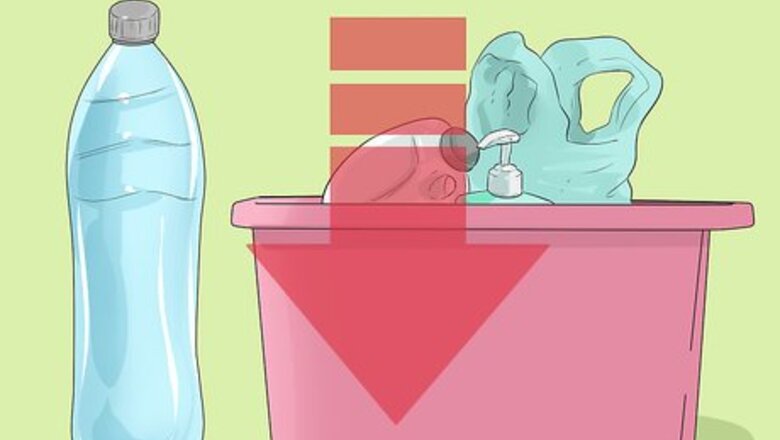
views
Reducing, Reusing, and Recycling
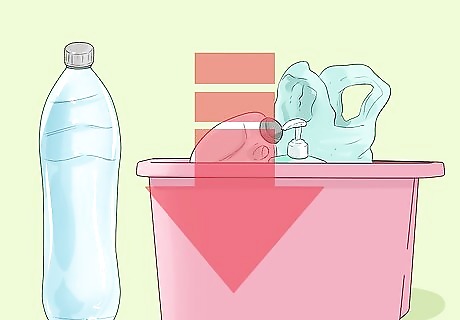
Reduce your use of plastic. Unless it’s marked “compostable,” plastic is made from petroleum. It can linger in the environment for hundreds of years and never break down completely, polluting the soil and groundwater. When plastics are not disposed of properly, they kill animals who mistake them for food. You can help to prevent this from happening by: Buying or making reusable bags. Leave a couple in your car/on your bike for shopping. Tuck a small one into your purse for unplanned trips to the grocery store. Asking your local grocery store to replace plastic bags with recycled paper bags or cardboard boxes. Even “biodegradable” plastic bags can end up in landfills, where they don’t break down properly. This makes them just as dangerous as regular plastic.

Reuse plastic containers to store food. Make sure the resin identification code (the number inside the recycling arrows) is 2 or 5. You can usually find these codes on the bottom of the containers. Plastics with these codes are generally safe to be reused for storing food. Any other number is either unsafe or not durable enough for reuse. If your plastic is not considered to be food-safe, you can recycle it or reuse it for arts and crafts. For example, plastic tubs are great for storing water to rinse paintbrushes with.
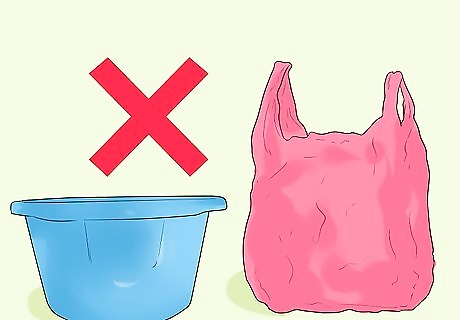
Refuse plastic as often as possible. Take the time to examine product packaging when you go shopping. Avoid goods packaged in plastic (including polystyrene) whenever possible. If your grocery store sells products in bulk, take advantage of it and fill up using your own containers. If you have a choice between paper or plastic bags, stick with paper. Of course, it would be even better if you brought your own bags. Some restaurants and take-out places will allow you to bring your own food containers. Ask ahead of time if this is possible.

Buy locally. Food and other household goods often travel in fossil fuel-powered vehicles over 1,000 miles (1,600 km) from their points of origin to store shelves. A great way to accomplish this is by: Buying food from your local farmer’s market. Join a community-supported agriculture (CSA) program. Growing your own food.

Recycle what you can’t reduce or reuse. Making new containers and paper products uses more fossil fuels than recycling old ones. Check online for the guidelines of your local recycling center. Search for what they will and won’t recycle. Check their sorting requirements, as well. For example, most recycling plants won’t recycle tissues, wax paper, or polystyrene. Unless they offer single-stream recycling, you’ll likely have to separate paper, plastics, glass, and metals. In some cities, recycling plants pay money for aluminum cans. Search online to see if your city offers this service. If it does, look for what kinds of aluminum cans are accepted. For example, some centers accept beverage cans but not pet food cans.
Conserving Energy
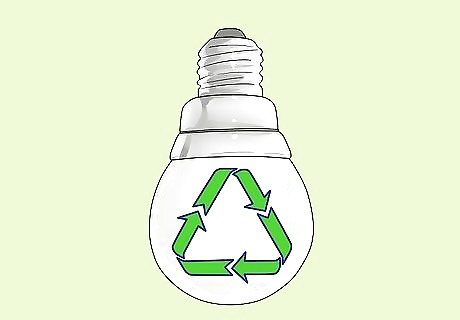
Use energy-efficient light bulbs. Opt for light-emitting diode (LED) bulbs. These options use an average of 75 percent less electricity (usually sourced from fossil fuels). They also last much longer (5 to 20 years), saving you lots of money in the long run. LEDs are brighter than incandescent bulbs. If you’re sensitive to bright lights, look into fitting your lamps with darker lamp shades. For ceiling fixtures, consider installing LED-compatible dimmers.
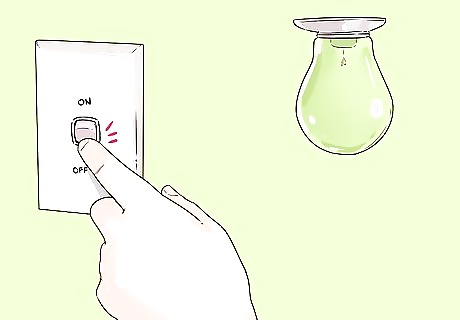
Reduce lighting use. Each time you turn a light on, you use up energy. Unfortunately, many people have a habit of turning on lights they don't actually need. By reducing your use of lighting, you will not only help conserve energy, but also save on electricity bills. Keep the lights off in rooms that you are not currently using. On sunny days, open the curtains for some free solar lighting. Consider switching to timers or motion sensors if you need lights on in unused areas for security or safety reasons. This is great for garden pathways. Use dimmers and less lighting later at night to help your body get ready for sleep. Switch to smaller, energy-efficient lights. If you’re reading or sewing, use a desk lamp rather than a ceiling lamp.
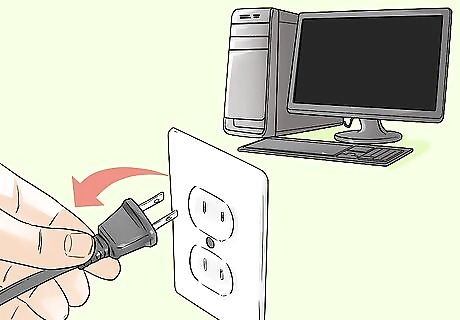
Unplug small appliances and electronics. Even if your coffee maker or computer is switched off, it’s still consuming energy as long as it is still plugged into the wall. Unplug these devices when not in use. If you have multiple electronics in, consider using a power strip. This way, you can simply turn the strip off to cut the power.
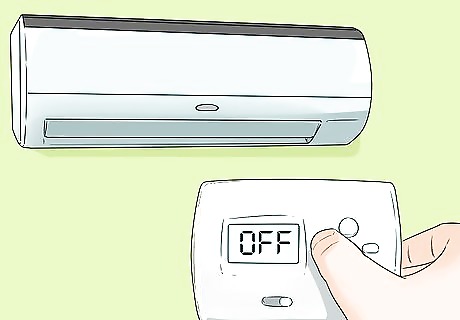
Turn down the heat and air conditioner. Central air often uses coal-based electricity. Central heating often uses oil or natural gas. Adjusting the temperature just one or two degrees can help to conserve resources. To maximize your comfort, dress warmly and use thick blankets during colder weather. When it’s hot outside, close the blinds on east-facing windows in the morning and west-facing windows in the afternoon. Insulate your home with weather stripping, caulk, and eco-friendly insulation. This will prevent cold winter air and hot summer air from making your home uncomfortable.
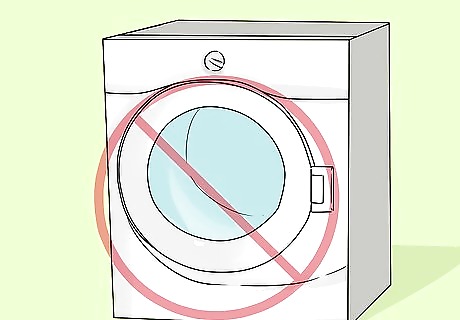
Ditch the clothes dryer. Most clothes dryers are electricity hogs. You can solve this problem by opting to air dry your laundry. On hot sunny days, hang your laundry outside to dry. If it’s cool and/or rainy (or if you’re drying your undergarments), dry your clothes indoors on drying racks. Your clothes will take slightly longer to dry, but the planet and your wallet will thank you. Clothes dryers can be rough on clothing. By switching to air drying, you may find that your clothes last longer.
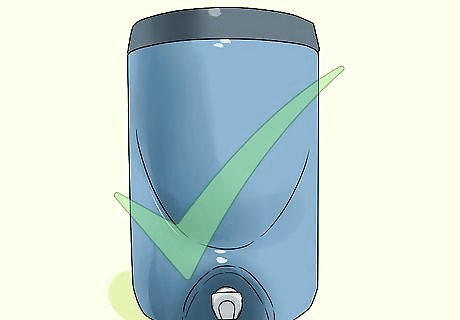
Use cooler water. Do this when you’re showering, washing dishes, or doing the laundry. Cool or cold water reduces fossil fuel consumption by about 90 percent. In the washing machine, it also preserves your clothes longer than hot water does. Don’t worry about germs surviving in cool water. As long as you’re using soap, you’ll still kill germs.
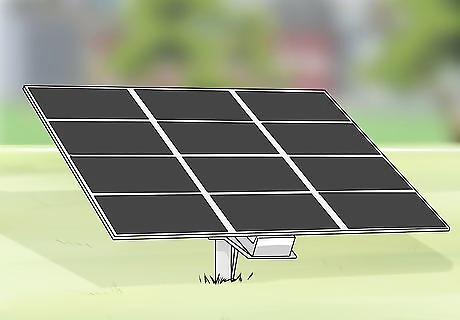
Power up with renewables. In many locations, the prices of solar and wind energy are competitive with fossil fuels. Although many national governments in Europe and North America have ended subsidies, some local governments still provide tax breaks for solar panels and/or wind turbines. Check with your city or state/provincial government to see if they offer these incentives. Solar panels come in a variety of sizes for rooftops and yards. If you prefer wind power, you can build or buy a turbine small enough for your backyard. If you’re an apartment/condo dweller or if you rent your home, look into buying offsets. Check online for power companies that match your energy consumption with clean power. You can stay with your current utility company, and it only takes a few minutes to sign up.
Choosing Transportation Wisely
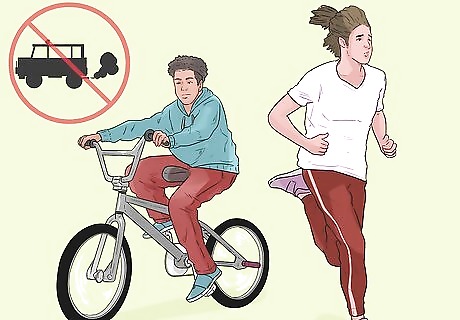
Choose zero-carbon transportation. Try cycling or walking to your destination. These are the most eco-friendly means of transportation because they don’t use fossil fuels. Find bike lanes/cycleways wherever possible. They’re safer than dealing with vehicles and getting hit in the face with their emissions. If your community doesn’t have bike lanes/cycleways, contact your city council and campaign for them to be added. Remember to practice good safety habits. If you are traveling in a dark area, have a reflector on you so that cars and other vehicles can see you. Wear a helmet when you bike.
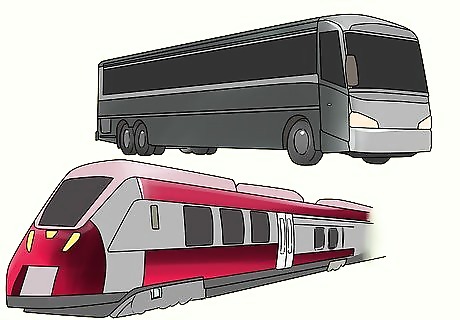
Use public transportation. Cities are increasingly using clean energy for their mass transit systems. However, even systems that still use fossil fuels can carry many passengers at once. In most cases, each passenger equals a vehicle that’s not consuming fossil fuels. If your city doesn’t have mass transit, try to organize a carpool or vanpool in your neighborhood. This can reduce fossil fuel consumption by taking up to 15 vehicles off the road. Jane Goodall Jane Goodall, Conservation & Animal Welfare Advocate Take action in your own life to protect the environment. "You cannot get through a single day without having an impact on the world around you. What you do makes a difference, and you have to decide what kind of difference you want to make."
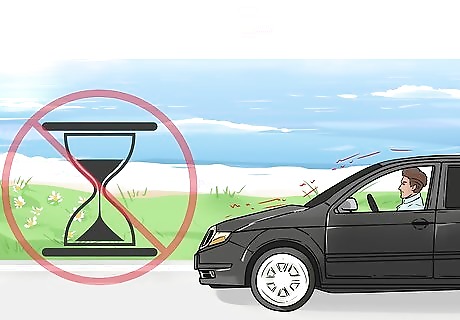
Don’t let your car idle. Unless you’re in traffic, turn off your engine if you don’t plan to move for 10 seconds or more. Idling wastes fuel, increases smog, and endangers people with respiratory conditions. In a growing number of cities, it’s also illegal and can cost you a hefty fine.
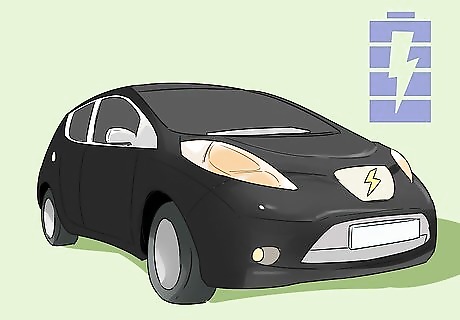
Look into hybrid or electric cars. Depending on where you live, you could greatly reduce fossil-fuel emissions with these options. Electric vehicles (EVs) run entirely on electricity. Hybrid vehicles use gas-powered engines as a backup after the battery loses its charge. Plug-in hybrids are charged by plugging them into a wall, while traditional hybrids are charged by an on-board generator. If you live in a location that relies on coal-based electricity, you’ll still be using fossil fuels when you charge your car. However, you can reduce your impact by charging overnight when the grid is under less pressure.
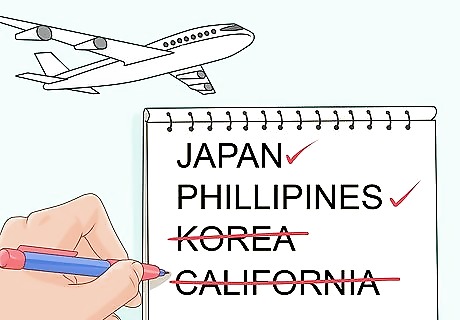
Reduce your number of flights. Planes burn jet fuel at high altitudes, which causes chemical reactions that worsen climate change. Make a list of the places you absolutely must visit by plane, and stick with those. For example, a trip for business or an important family occasion is important. On the other hand, flying off to an exotic island on a whim isn’t all that crucial. For business trips, ask your employer if you can telecommute instead of flying. The company will save money on airfare, and you’ll cut back on your carbon footprint. If you have family members who live thousands of miles away, download video chat software like Skype. If your relatives also have it installed on their computers, you can talk for hours “face-to-face” without spending money or burning fossil fuels.
Spreading the Word

Talk to your friends and neighbors. Educate them on the benefits of recycling, conserving energy, and eco-friendly transportation options. Appeal to their concerns as parents, older siblings, or aunts/uncles. If they don't consider themselves environmentalists, ask them to take these measures so that the children in their lives will have a decent future. A great way to spread information is by going door-to-door. If you want to hand out pamphlets, make sure that you use recycled paper. Consider hosting a meeting or presentation at a community center so that you can educate a bunch of people at once.
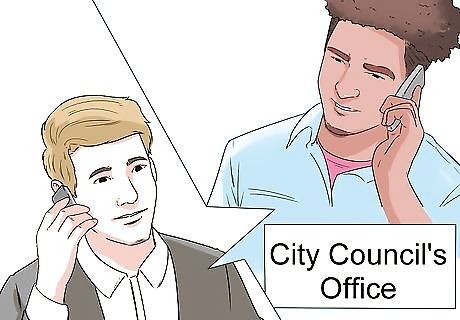
Contact your elected officials. It only takes two minutes to send an email to your state and national representatives, but why stop there? Attend town hall, city council, and school board meetings to voice your concerns in public. Ask your senator/representative/MP why they voted to expand oil drilling. Tell your city council you'd like to see a bus or light rail system. Ask your school board to adopt an anti-idling policy on school grounds. If you are still a kid, consider talking to your school principal or student council. They may find solutions for saving energy and paper.
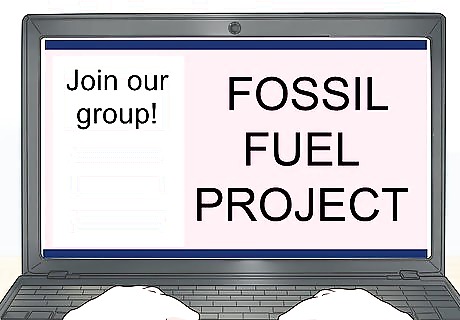
Join the divestment movement. Search online for organizations urging corporations to divest (remove their money) from pipelines and other fossil-fuel projects. This includes banks, credit card companies, and boards overseeing pensions. For example, if your bank or credit card company funds these projects, tell them you will do business with more responsible companies if they don't divest.




















Comments
0 comment